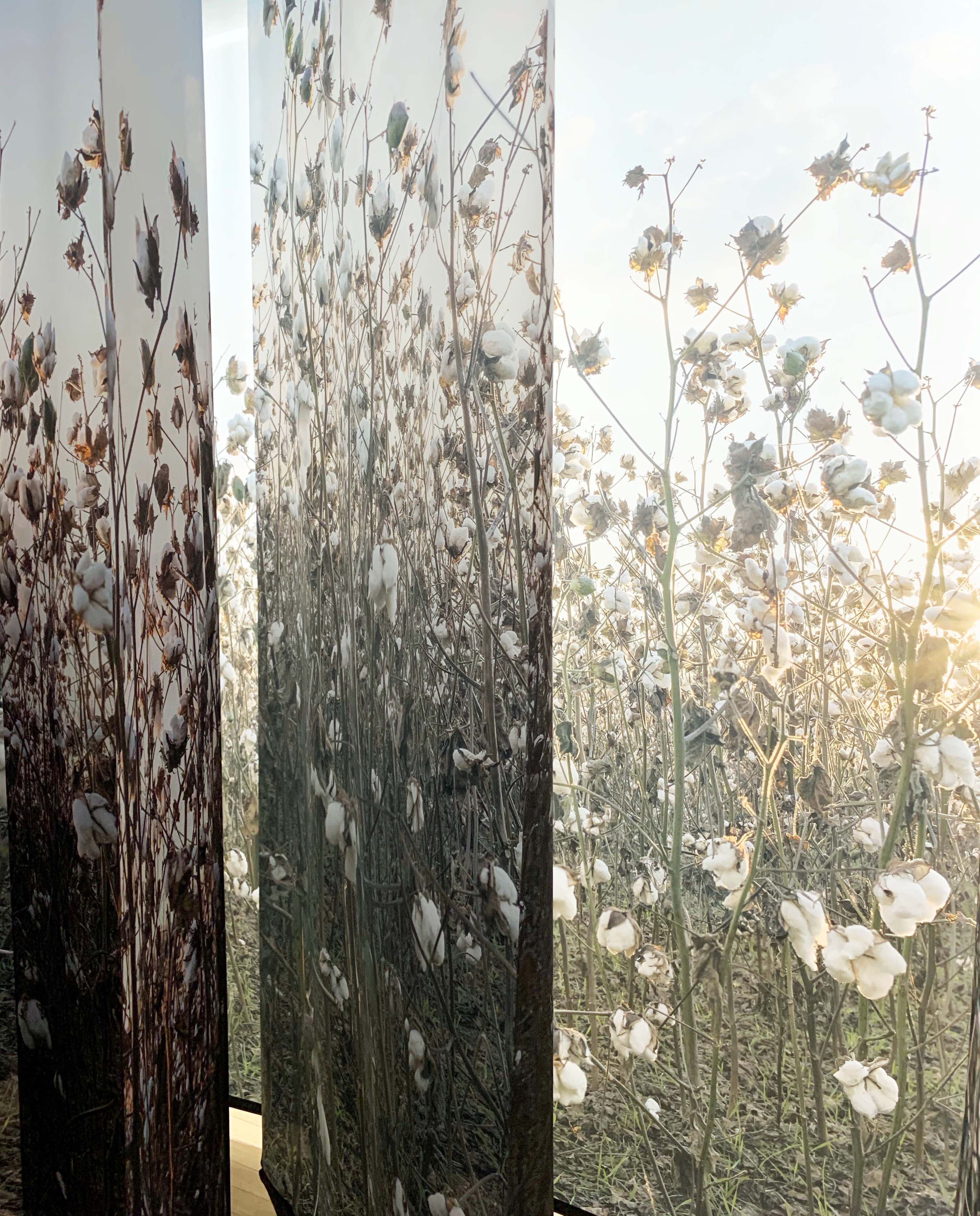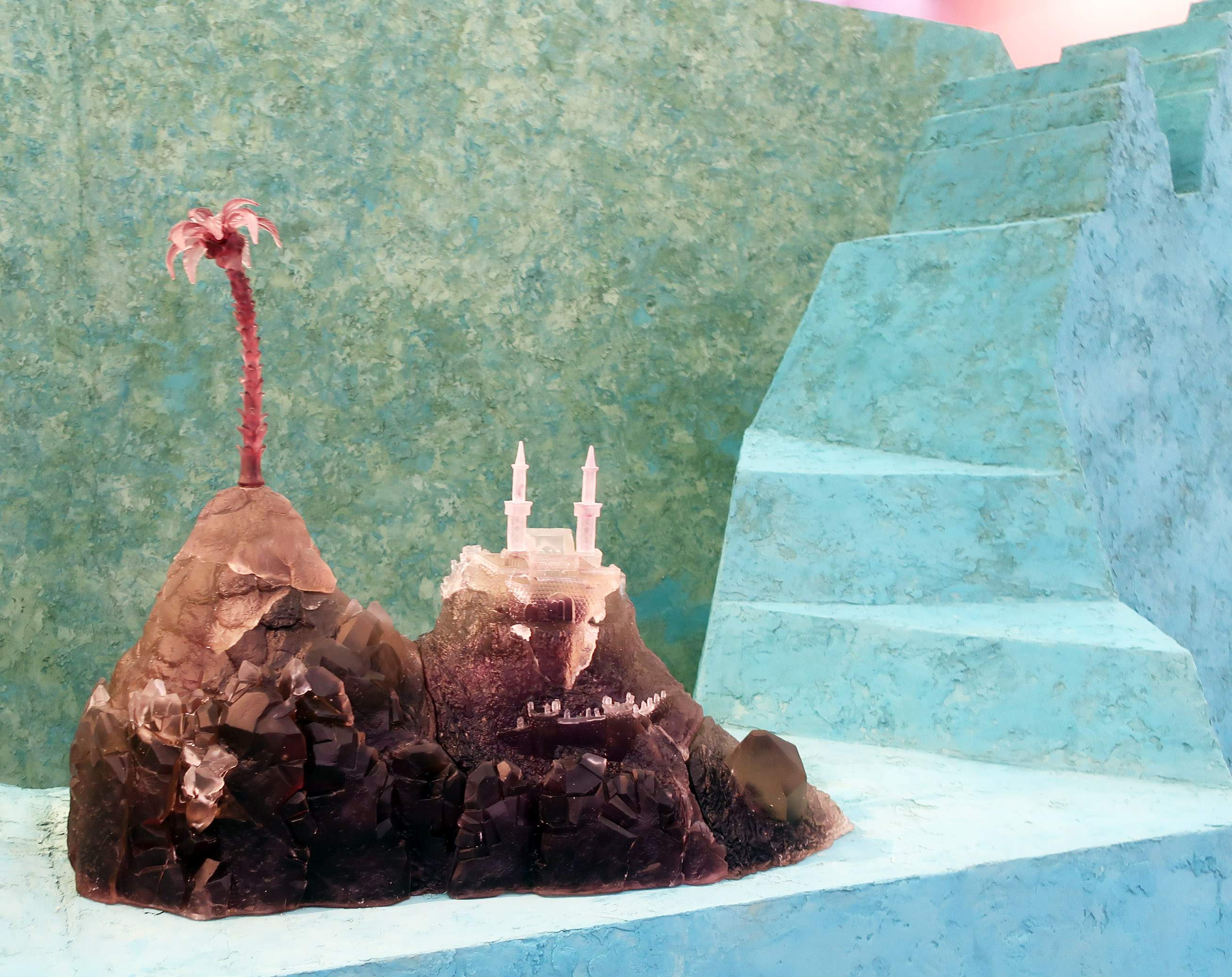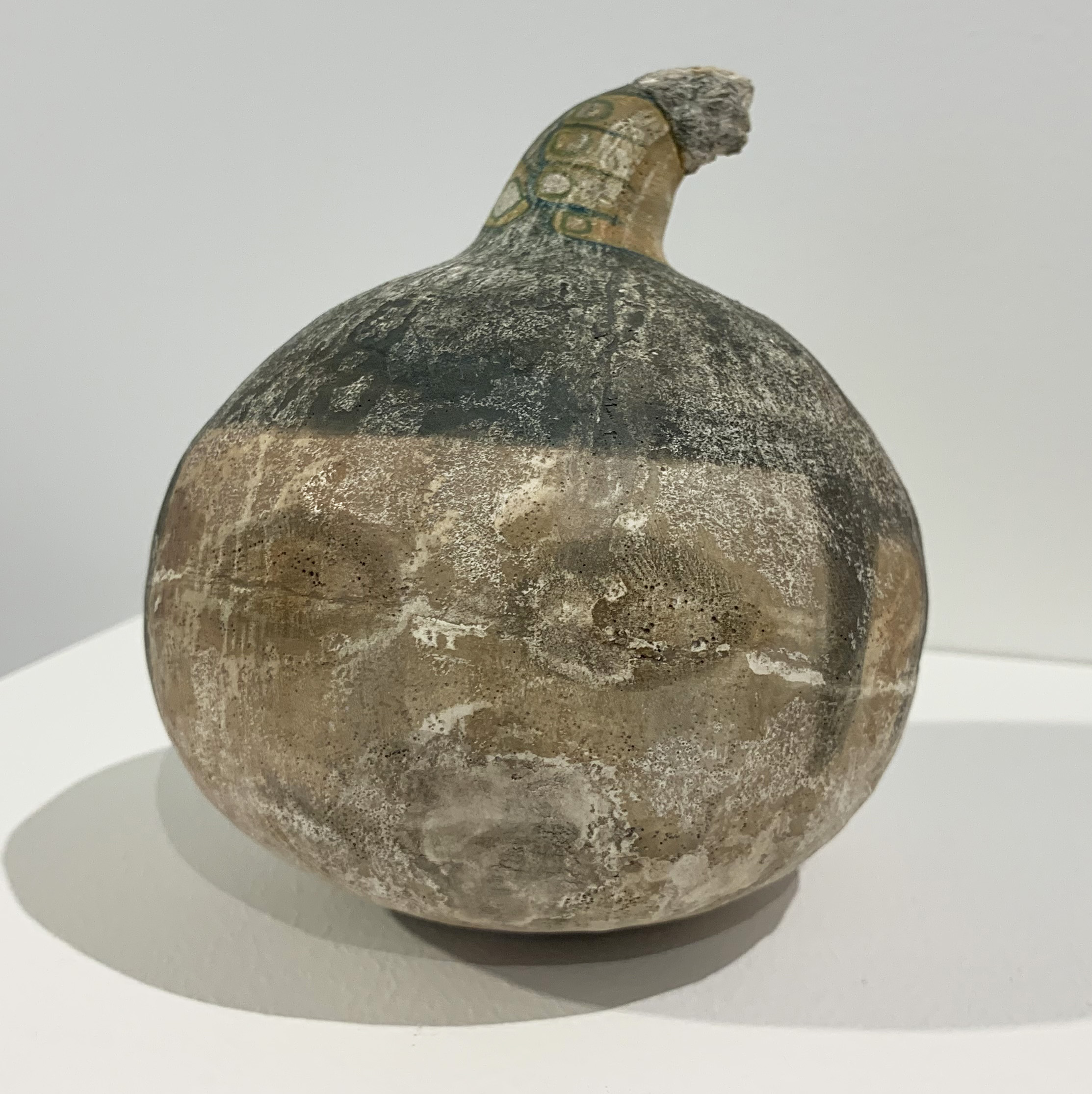Nairobi-based artist Kaloki Nyamai’s New York solo debut at James Cohan Gallery introduces an artist who uses acrylic paint, stitching and photo transfer to create complex surfaces that suggest complicated histories. This painting’s title, ‘The one who stole my heart,’ features a figure leaning back into a man whose outward-looking eyes connect with our gaze. In contrast to the couple’s intimate, relaxed moment, partially visible figures in the background raise their arms in what could be celebration or protest. Elsewhere, photo transfers contrast happy moments of communal activity with news articles about political unrest as Nyamai juxtaposes the lives of individuals with larger social happenings. (On view through May 4th).





